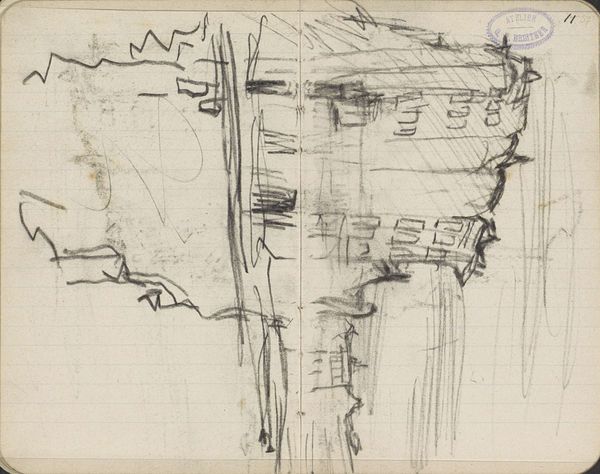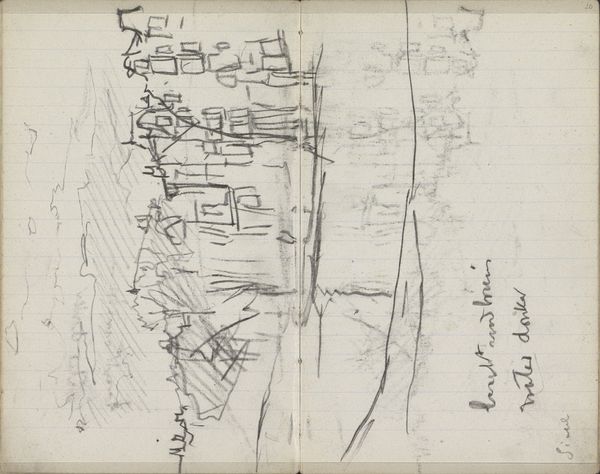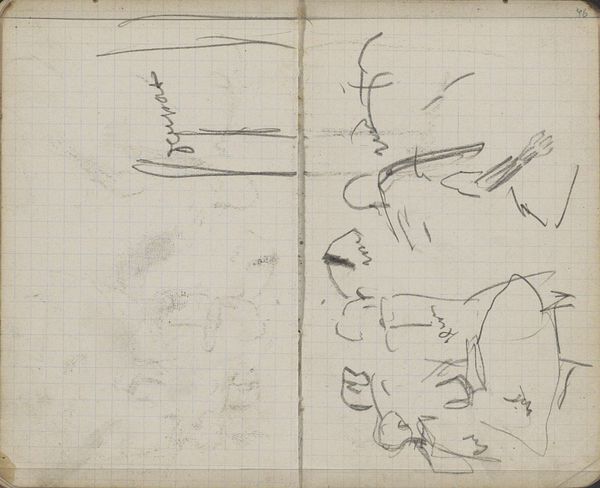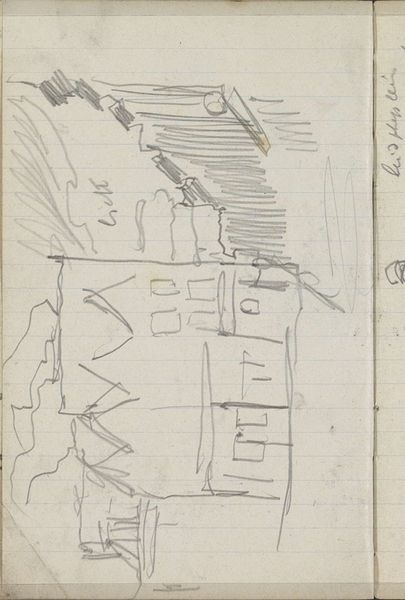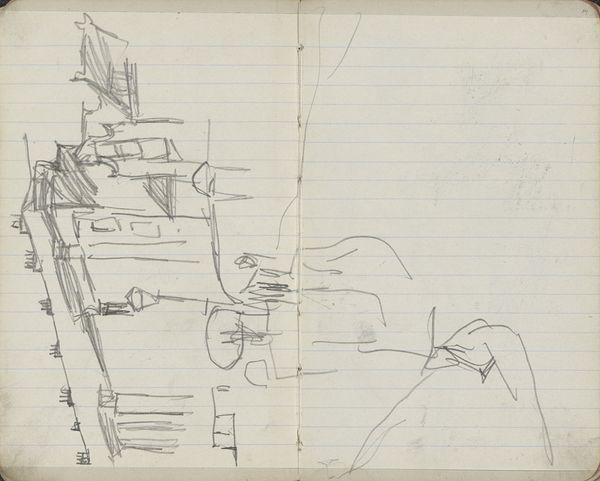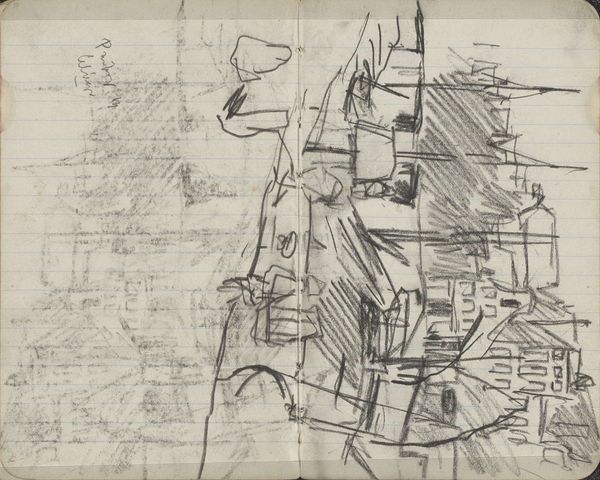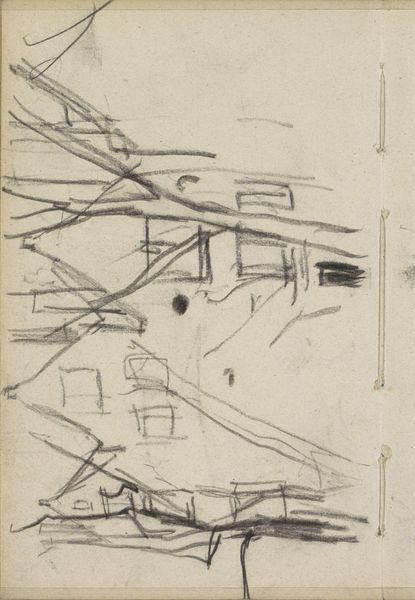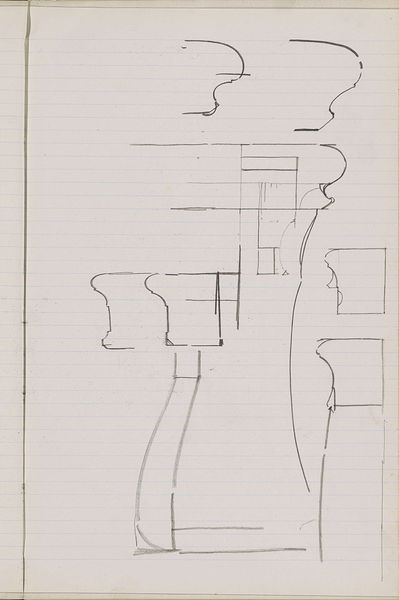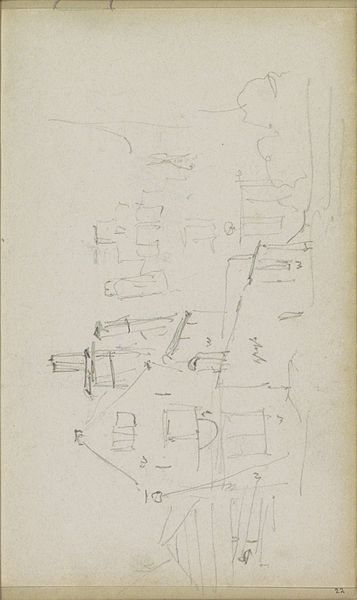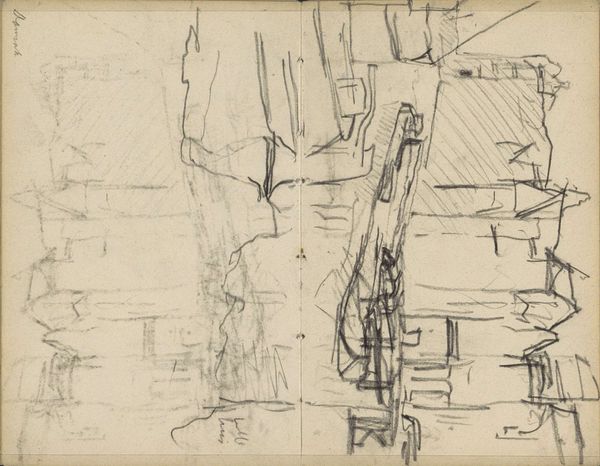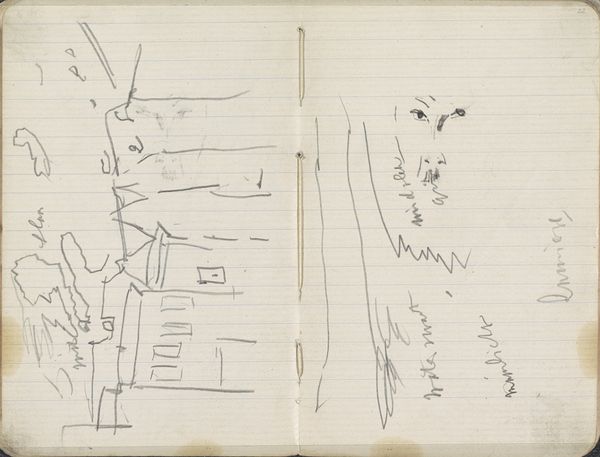
Copyright: Rijks Museum: Open Domain
Curator: George Hendrik Breitner's 1893 pencil drawing, "Gezicht op de Torensluis te Amsterdam," offers us a peek into the artist's sketchbook, now residing here at the Rijksmuseum. Editor: Immediately, I see something unfinished and deeply personal, almost like rifling through someone's intimate thoughts. The paper's aged look enhances that sense of faded memory. Curator: Indeed, it's more of a collection of impressions, rapidly jotted down. Look at how the structural elements—the bridge itself, the buildings—are rendered with quick, almost nervous lines. The use of the grid suggests a structural base, a map, and then these quick captures, blurring them. Editor: It certainly draws attention to the means of its production. You can almost smell the pencil dust and feel the paper. It's raw materiality in the service of recording the raw reality of urban life. I love that we also see Breitner’s own hand-drawn notations on the right page, further humanizing this artifact of labor. It almost demands an answer, in reverse, what did he think he was doing when we weren't looking, just doodling! Curator: The handwritten note does add another layer, doesn't it? Almost like the whispers in your own mind while navigating the modern world. And for me, the sketch captures the dynamism of Amsterdam at that time. Not just the pretty canals, but the industry and bustle... a very palpable tension between line and shadow. Editor: Do you see an element of the industrial, or the tension? I find it quite relaxing as if he found his place just resting, even with the weight of urban hustle around. In contrast, the lack of people really emphasizes how it felt, and maybe why. Curator: Well, consider how he's using light, or rather, implying light with such sparse lines, particularly around the water and the bridge's reflection. And Breitner, as you know, was fascinated by capturing fleeting moments of modern life, often employing photography too. He might be thinking through how those photos could be transferred. Editor: That blending of photography with manual drawing definitely emphasizes a connection to industrial reproduction and his personal crafting of his observations into something novel. This drawing also feels remarkably free from the burden of "high art". A casual record to allow his genius to move with, as opposed to defining, form. Curator: Exactly. A space of liberation on the go, to get to the true form by allowing things to breathe! It certainly leaves you pondering the nature of perception. What we choose to capture, and what we leave behind, in art, but also in life itself. Editor: It just reminds us that even rough sketches can tell us something incredibly meaningful about an artist's journey and relationship to the material world, no matter the intention.
Comments
No comments
Be the first to comment and join the conversation on the ultimate creative platform.
